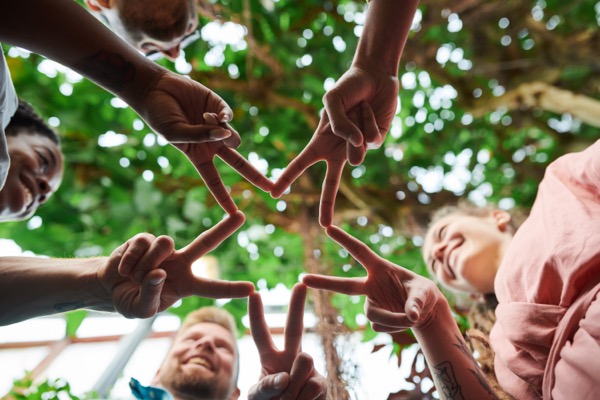Creating Brave Spaces
17/09/20 08:21 Filed in: AZA Conference Post | Zoo Design theory
by Gail Lash, Ph.D.

Many of yesterday’s talks at the Association of Zoos and Aquariums (AZA) Conference were about our support communities. How do we connect with them? What do they want? How can we be resources for them? How can we inspire conservation action? I particularly liked what Jess Niven-Kohring, from the Los Angeles Zoo & Botanical Gardens, said about creating “Brave Spaces” of/by/for their communities. Let’s explore this more here.
These are times for courage, and cross-pollination of collaboration. Developing harmonious relationships within communities is key to success in any AZA (and life) endeavor. No one is an island. Michael Mace said, “We share the Earth. We are not Alpha; we are part of community”. Kym Gopp, in reference to wildlife trafficking, talked about knowing which conservation actions people feel are meaningful, and what actions they are willing (or not willing) to take. It involves “telling the right story”. We must get to know and understand that which targets our hearts and turns our emotions on.
Amy Niedbalski shared that their goal is “bettering local communities” around the St. Louis Zoo area. They partnered with University of Missouri, Americares, and other institutions in workshops designed to map community assets. They executed “Community Listening” sessions, and community surveys, in order to identify needs and desires of their communities.
These institutions created “Brave Spaces” – ones in which serious and heartfelt dialogue could occur, and resolutions be made. Around the topic of wildlife trade and trafficking, Dr. Chris Walzer expressed that we need to tackle the Root Causes of ailing planet health, like extreme wealth and poverty, and consumption patterns – not just mitigating symptoms of planet illness, like wet markets of wildlife food trade. It is time that society (zoos, aquariums, public parks, schools, hospitals, civic organizations, etc) comes together to designate and assign Brave Spaces to examine and consult on topics that really matter.
I am excited about these Brave Spaces. They align perfectly with Peace Gardens and Peace Parks – opening nature’s doorways to allow for deep conversations. Feel inspiration and wonder at being in green outdoor beauty, sounds of birds, warm breeze on your face, and people willing to share what is really important to them in their lives. These brave spaces are safe places in which to explore how we can honor the diversity of communities, and unite in peace.
Amy Niedbalski shared that their goal is “bettering local communities” around the St. Louis Zoo area. They partnered with University of Missouri, Americares, and other institutions in workshops designed to map community assets. They executed “Community Listening” sessions, and community surveys, in order to identify needs and desires of their communities.
These institutions created “Brave Spaces” – ones in which serious and heartfelt dialogue could occur, and resolutions be made. Around the topic of wildlife trade and trafficking, Dr. Chris Walzer expressed that we need to tackle the Root Causes of ailing planet health, like extreme wealth and poverty, and consumption patterns – not just mitigating symptoms of planet illness, like wet markets of wildlife food trade. It is time that society (zoos, aquariums, public parks, schools, hospitals, civic organizations, etc) comes together to designate and assign Brave Spaces to examine and consult on topics that really matter.
I am excited about these Brave Spaces. They align perfectly with Peace Gardens and Peace Parks – opening nature’s doorways to allow for deep conversations. Feel inspiration and wonder at being in green outdoor beauty, sounds of birds, warm breeze on your face, and people willing to share what is really important to them in their lives. These brave spaces are safe places in which to explore how we can honor the diversity of communities, and unite in peace.